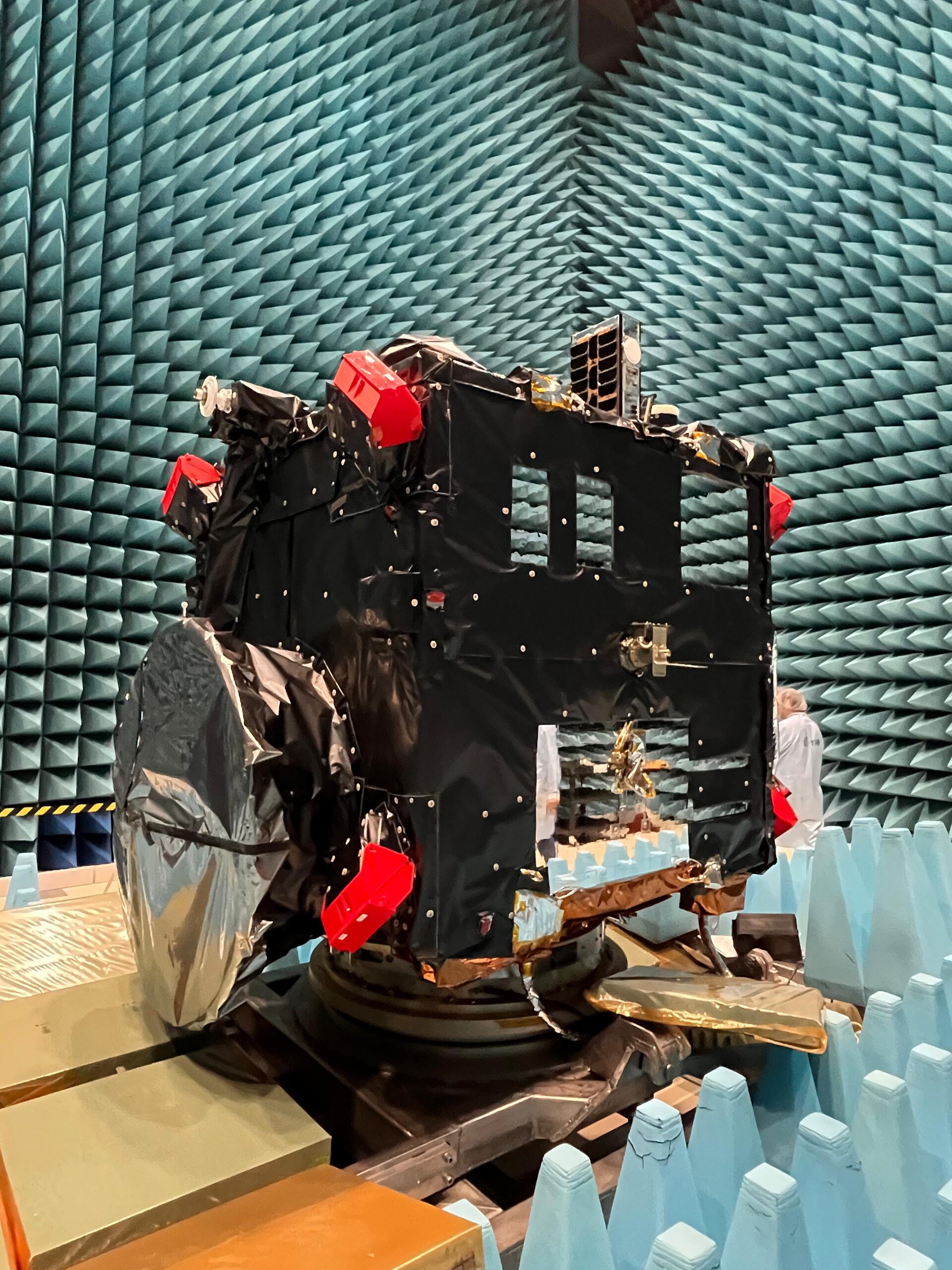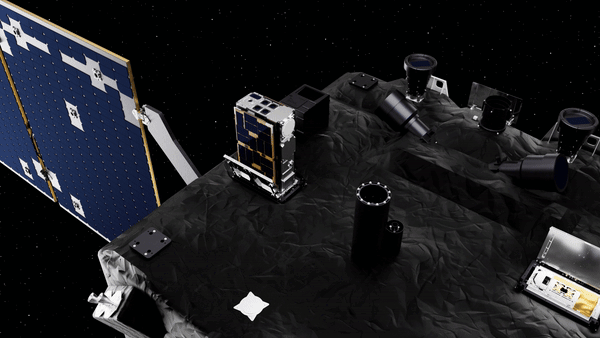

Hera plus one: enter the CubeSat
The rectangular, radar-bearing Juventas CubeSat seen part-deployed from the top of its Hera mission mothership, inside ESA’s space-like Maxwell chamber for electromagnetic compatibility testing.
The foam pyramids seen around Hera absorb radio signals, while the 9-m high metal walls of the Maxwell chamber keep out all external radio interference. The result is a space that mimics the infinite void of space. This allows the Hera team to validate how the spacecraft will interact with its two CubeSats through its Low Gain Antenna (projecting top left), while simultaneously maintaining contact back with Earth through its large, dish-shaped High Gain Antenna (lower left).
“We’re testing that Hera can communicate with its CubeSats while also talking to Earth, without unexpected interference,” explains Hera systems engineer Franco Perez Lissi. “Accordingly Hera’s mission control team at ESA’s European Space Operations Centre, ESOC, in Darmstadt, Germany, is also talking directly with the spacecraft for the first time, through the High Gain Antenna, just as they will when the mission is in space.”
Hera is ESA’s first mission for planetary defence. Due for launch in October this year, Hera will fly to the Didymos binary asteroid system in deep space to perform a close-up survey of the Dimorphos moonlet in orbit around the primary body. The Great-Pyramid-sized Dimorphos is already historic, as the first Solar System object to have its orbit changed by human activity, by the 2022 impact of NASA’s DART mission.
Hera is intended to gather crucial missing data about Dimorphos for scientists, to turn DART’s grand-scale experiment into a well-understood and potentially repeatable planetary defence technique. To increase its yield of data, Hera carries with it ESA’s first deep space CubeSats, carrying additional instruments and planned to fly closer to the asteroid’s surface than the main spacecraft, before eventually landing.
The Juventas CubeSat carries a radar instrument, to perform the first radar probe of an asteroid’s internal structure, along with a gravity-detecting gravimeter. Its Milani counterpart hosts a multispectral imager to survey surface mineralogy as well as a dust surveyor.
In addition, the inter-satellite links connecting both CubeSats with Hera will enable greater accuracy in Hera’s measurement of Dimorphos’s mass, by analysing gravity-driven Doppler shifts occurring between the trio.
“Our testing of how Hera works with its CubeSats starts with the initial deployment process, which occurs differently from that of any standard CubeSat,” adds Franco. “The Deep Space Deployer on Hera’s topside ‘Asteroid Deck’ part releases each CubeSat, so it emerges from the spacecraft but still has power and data tethers connecting it. This will allow us to check the CubeSat is fully operational, and its radio link with Hera works as needed, before each one is fully deployed into space around a day later, to begin its own mission.”
Once this initial phase is completed, the testing will proceed to simulate the communications of the CubeSats in free flight back with Hera.





